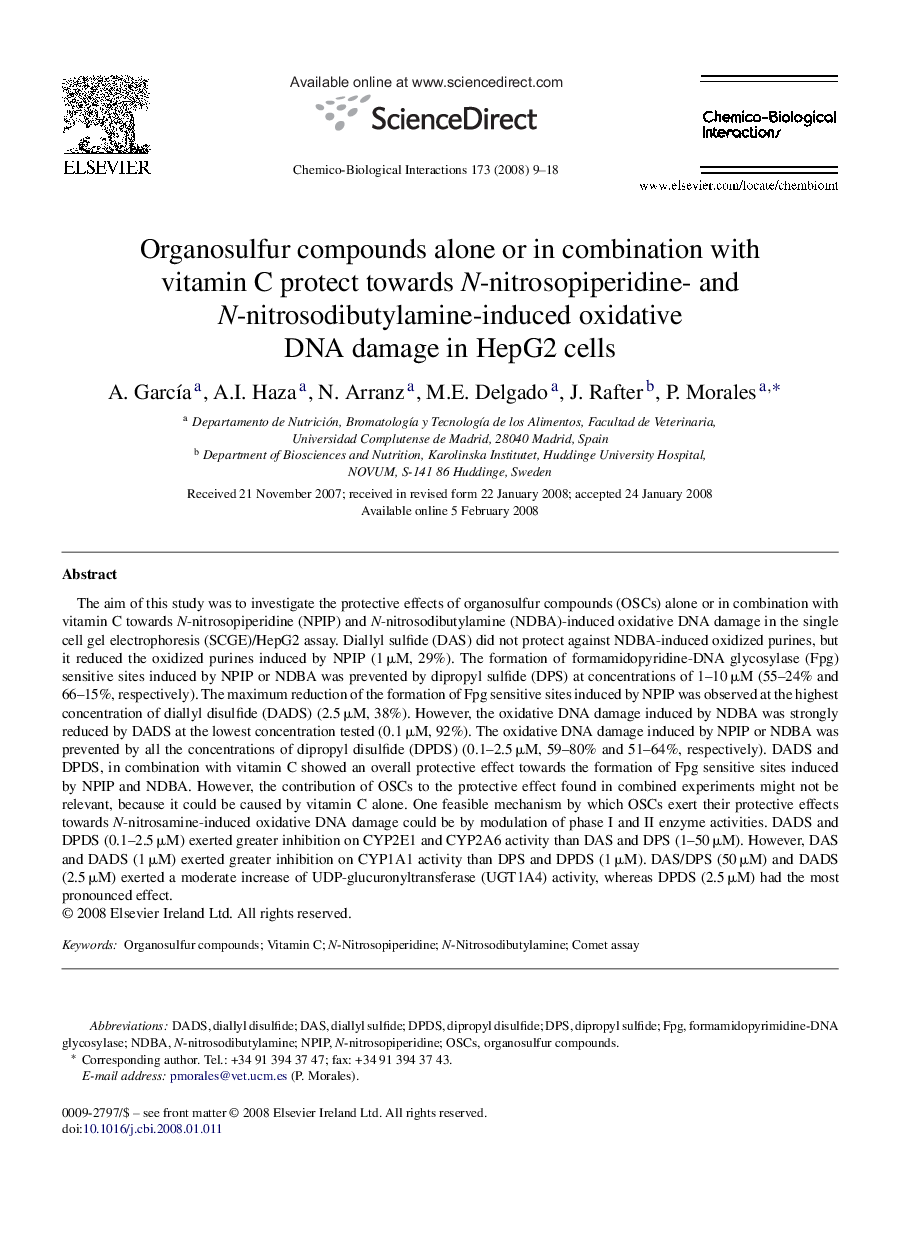| کد مقاله | کد نشریه | سال انتشار | مقاله انگلیسی | نسخه تمام متن |
|---|---|---|---|---|
| 2581990 | 1130216 | 2008 | 10 صفحه PDF | دانلود رایگان |

The aim of this study was to investigate the protective effects of organosulfur compounds (OSCs) alone or in combination with vitamin C towards N-nitrosopiperidine (NPIP) and N-nitrosodibutylamine (NDBA)-induced oxidative DNA damage in the single cell gel electrophoresis (SCGE)/HepG2 assay. Diallyl sulfide (DAS) did not protect against NDBA-induced oxidized purines, but it reduced the oxidized purines induced by NPIP (1 μM, 29%). The formation of formamidopyridine-DNA glycosylase (Fpg) sensitive sites induced by NPIP or NDBA was prevented by dipropyl sulfide (DPS) at concentrations of 1–10 μM (55–24% and 66–15%, respectively). The maximum reduction of the formation of Fpg sensitive sites induced by NPIP was observed at the highest concentration of diallyl disulfide (DADS) (2.5 μM, 38%). However, the oxidative DNA damage induced by NDBA was strongly reduced by DADS at the lowest concentration tested (0.1 μM, 92%). The oxidative DNA damage induced by NPIP or NDBA was prevented by all the concentrations of dipropyl disulfide (DPDS) (0.1–2.5 μM, 59–80% and 51–64%, respectively). DADS and DPDS, in combination with vitamin C showed an overall protective effect towards the formation of Fpg sensitive sites induced by NPIP and NDBA. However, the contribution of OSCs to the protective effect found in combined experiments might not be relevant, because it could be caused by vitamin C alone. One feasible mechanism by which OSCs exert their protective effects towards N-nitrosamine-induced oxidative DNA damage could be by modulation of phase I and II enzyme activities. DADS and DPDS (0.1–2.5 μM) exerted greater inhibition on CYP2E1 and CYP2A6 activity than DAS and DPS (1–50 μM). However, DAS and DADS (1 μM) exerted greater inhibition on CYP1A1 activity than DPS and DPDS (1 μM). DAS/DPS (50 μM) and DADS (2.5 μM) exerted a moderate increase of UDP-glucuronyltransferase (UGT1A4) activity, whereas DPDS (2.5 μM) had the most pronounced effect.
Journal: Chemico-Biological Interactions - Volume 173, Issue 1, 9 May 2008, Pages 9–18